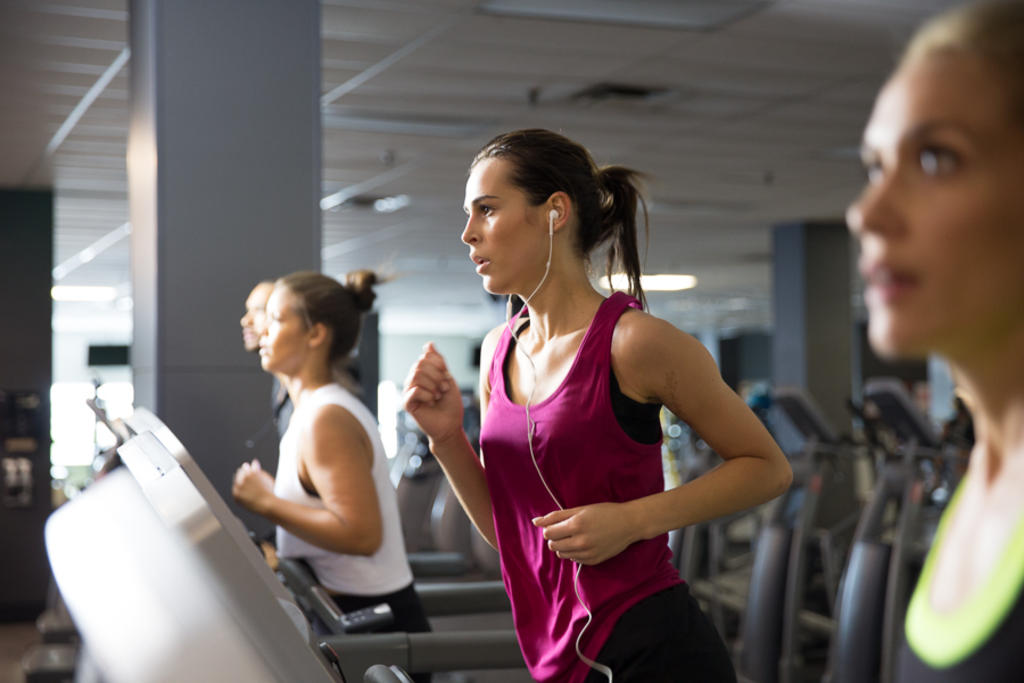The clocks fall back, but you don't have to.
When we turn our clocks back an hour on Sunday, November 5, Canadians get an extra hour of sleep in the morning and a lot less light in the evenings. It's more important than ever to find time for regular exercise, and the week after the time change is a good time to get started.
According to Abby Johnson, team training specialist with GoodLife Fitness, exercise offers many benefits when it comes to adjusting to time changes, sleep interruptions and colder, darker days.
Exercise can:
Reset circadian rhythms – The switch out of Daylight Savings time can interrupt your sleep patterns for up to a week. Exercising at the same time each day can help you get your sleep back on track after the time change
Improve mood – With fewer daylight hours, many Canadians feel their energy and mood decline. In fact, as many as 15 percent of Canadians will suffer from seasonal affective disorder (a form of depression) in their lives. Regular exercise causes your brain to release feel-good hormones that can help regulate and improve mood.
Boost energy – More darkness, colder temperatures, and sleep disruption can leave us feeling distracted and lazy. It’s tempting to stay indoors and watch TV, eat and drink more and be less active. But physical activity increases heart rate, circulation, and mental focus. Regular workouts will leave you feeling energetic, stronger and more focused.

Johnson suggests connecting with a personal trainer or other fitness experts to brainstorm ways to use the fall time change to kick-start your winter health. Here are some ideas.
Use the extra hour to work out. This may be the only time in the year you wake up BEFORE the alarm. Channel the time change to build in some exercise. Commit to exercising in the morning for one week and see if it becomes a habit. Also, it will be light for the first few weeks, and easier to get to the gym or out for a run.
Don’t be deterred by darkness. Increase your exposure to bright light and physical activity during the day until late afternoon/early evening to help compensate for the overall reduction of daylight hours. Take advantage of morning and lunchtime to go for a run, bike to work, or get your co-workers together for a lunchtime walk to enjoy more sunshine and fresh air. During winter months, remember to take a vitamin D supplement.
Change your body and your outlook. Change your posture by pushing your shoulders up and back, take deeper breaths, look ahead. Keep moving, whether it’s walking to work, jogging in the morning, taking the stairs or playing outside with your kids.
Stay hydrated and choose healthy foods. Avoid caffeinated beverages, since too much caffeine can further disrupt your natural sleep rhythm.
Fit in full-body fitness moves. Exercises that use various parts of your body can kick-start your metabolism and give you more energy. Here are some examples of full-body moves to boost energy:
Superman: Lie face down and extend arms and legs. Flutter-kick legs up and down, simultaneously reaching arms toward feet, then back overhead. That’s one rep. Do 2 or 3 sets of 10.
Goblet squat with a press: Hold a hand weight vertically; lower hips, bringing elbows inside knees. Return to standing and press arms overhead. That's 1 rep. Alternate sides with each rep. Do 2 or 3 sets of 10.
Single leg deadlift: Hinge at the hips, lowering torso as right leg lifts. Working balance, try to touch fingertips to the floor, then come back to start. That's 1 rep. Do 2 or 3 sets of 10 on each side.
We can connect you with a personal trainer in your area who can discuss the best way to tackle the time change with exercise, as well as show some quick energy boosting workouts to tone your body, engage your heart and make you more alert. Please let me know if you’d like to book an interview.
